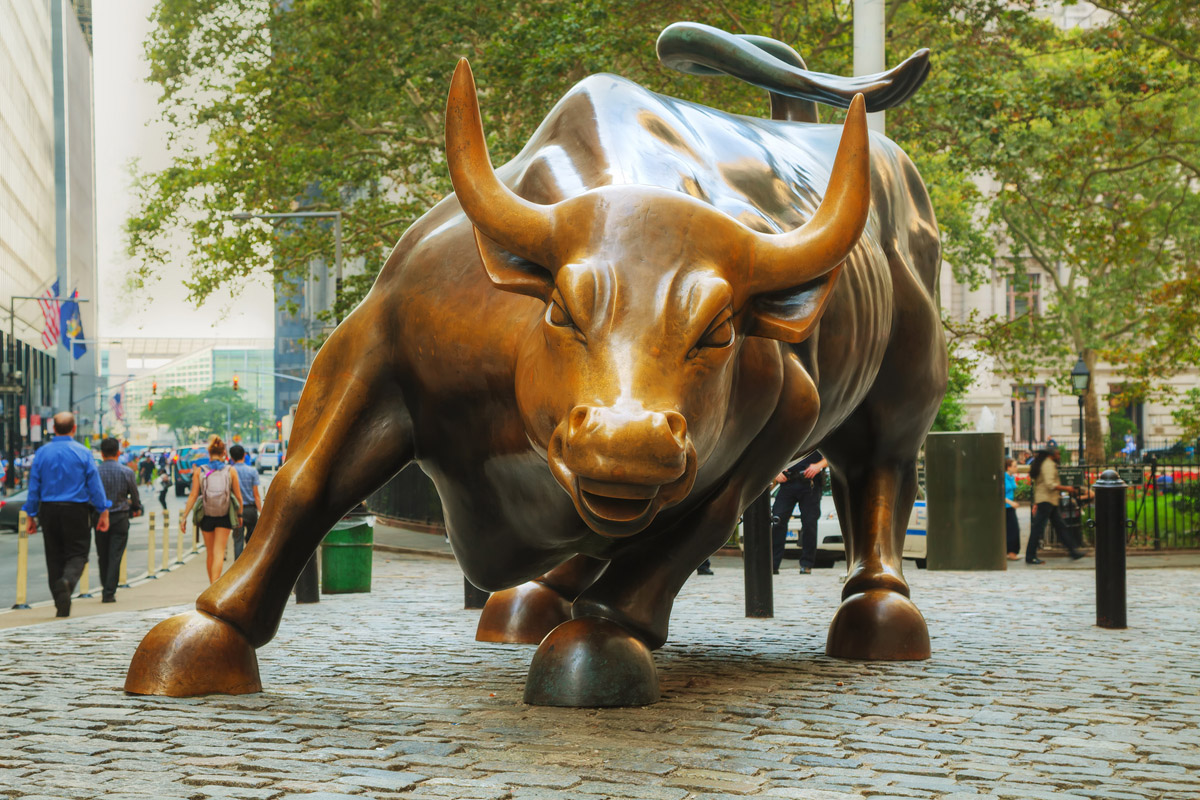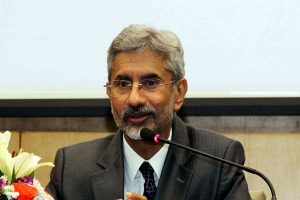ACassandra may not be welcome at a time when stock markets are on the up and up the world over; the Sensex in India, the Dow, Nasdaq Composite, and S&P 500 in the US are at all-time high levels, giving a reason to cheer in an otherwise dull economic scenario. Yet, a note of caution may be in order. Historically, right from the South Sea Bubble burst in 1720, stock market crashes have been preceded by abrupt surges in stock prices.
The Wall Street Crash of 1929 immediately followed an unprecedented upsurge in American stock prices and the dot-com bubble burst in the late 1990s, after a sharp increase in shares prices of newly floated IT companies. The US stock market peaked in October 2007, just before the Global Financial Crisis of 2008, with the Dow Jones Industrial Average index crossing 14,000 points. Subsequently, after a pronounced decline, the Dow Jones bottomed out at 6,600 in March 2009. In India, the 1992 stock-market crash followed the Harshad Mehta engineered boom and the 2001 stock-market crash was preceded by artificial inflation of share prices by the infamous Ketan Parekh.
Advertisement
The aftermath of stock-market crashes has always been disastrous. After the South Sea Bubble burst of 1720, a large number of people were ruined and the British economy contracted significantly. The Wall Street Crash of 1929 was followed by the Great Depression which resulted in a fall of 15 per cent in world GDP in three years, with international trade declining by more than 50 per cent. Unemployment in the US rose to 25 per cent and in some countries, employment fell by 33 per cent. Shortage of funds halted construction activities across the globe. People unconnected with finance like farmers also suffered, as crop prices fell by about 60 per cent.
The stock-market crash of 1992 in India is of recent memory. Harshad Mehta was a cult figure having brought untold wealth to many by jacking up prices of some select scrips. Suddenly, one day, people discovered that Mr Mehta was wanted by the police and Income-tax authorities, for fraud and worse. As suddenly as it had gone up, the bottom fell out of the stock market, ruining many newly minted investors. The rise and fall of share prices defy all logic. Sir Isaac Newton had invested nearly £22,000 in South Sea stock in 1722. When he was asked about the continuing rise in South Sea stock, he replied ‘that he could not calculate the madness of people.’
Sir Isaac Newton is quoted as saying, “I can calculate the movement of the stars, but not the madness of men.” It is not known how much Sir Isaac Newton lost when the South Sea Bubble burst. Coming to the present, the Indian share market has risen consistently in the last one and a half years. Barring a dip in share prices in February-March 2018, following the imposition of Long-Term Capital Gains Tax on share profits, the Sensex has been on a consistently upward trajectory, closing at the previously untouched level of 40,653 on 7 November 2019. Simultaneously, the last one and a half years have seen a slowdown in the Indian economy, with growth dropping down to 5.8 per cent and 5 per cent respectively, in the last two quarters.
Growth drivers like real estate, automobiles, gems and jewellery are not doing well at all. Other economic indicators are also not inspiring. For example, core sector output fell by 5.2 per cent in September 2019 and the services sector output too witnessed a fall. Most importantly, unemployment is at an alltime high of 8.5 per cent. The prognosis is also not encouraging; the RBI has revised its estimate of GDP growth in the current year from 6.8 per cent to 6.1 per cent and has declared that consumer confidence is the lowest in 30 months. The fiscal deficit looks to be at least 1 per cent higher than the Budgeted figure of 3.3 per cent, despite the Government receiving a massive contribution of Rs. 1.73 lakh crore from the RBI.
The Finance Minister, the Chief Economic Advisor and all concerned with finance in the Government have come on record to admit to a cyclical and partially structural slowdown in the economy. The continued rise of the Sensex in the face of such disheartening economic indicators merits scrutiny. What, indeed, has driven the Sensex to its highest ever level when the underlying value of shares has eroded? Foreign Portfolio Investors (FPIs), who are major investors in the Indian Stock Market are one of the suspects. The investment of FPIs in the Indian stock market exceeds $ 450 billion i.e. Rs.32 lakh crore which is more than 20 per cent of the total investment in the stock market. During the current financial year alone, the FPIs net investment in the Stock Market has exceeded Rs.1.22 lakh crore.
The ability of FPIs to influence share prices is unquestioned; after the tax hike on FPIs on 5 July the FPIs started dis-investing and the Sensex moved downward, recovering only after the tax hike was reversed on 23 August 2019. Foreign Portfolio Investors are loosely regulated by SEBI, RBI, Finance Ministry and the Income-tax Department, but have their way, if things do not go according to their plans. The climbdown by the Finance Minister on FPI taxation, so soon after the Budget, is an example of the FPIs’ clout. To say that FPIs are enamoured of the India economy, would be a travesty of the truth. If that was so, Foreign Direct Investment in India would far exceed Foreign Portfolio Investment, which is not the case.
Looking at earlier data, investment of Foreign Portfolio Investors (FPI) in shares increased by Rs 3.35 lakh crore to Rs 26.61 lakh crore in the financial year 2017-18 ~ which was more than the increase in Foreign Direct Investment (FDI) in the same period. For the financial year 2018-19, FDI was more than FPI but the two figures were still roughly comparable. The unfulfilled challenge before our policy makers is to redirect Foreign Portfolio Investment to more productive avenues because a constant increase in share prices, despite a slowing economy has given a speculative tinge to the share market, which is diverting domestic resources from production to share trading.
The interest of FPIs in the Indian share market is surprising because the profitability of Indian corporates is one of the lowest in the world; the combined net profit of BSE 500 companies is $ 63 billion, which is equivalent to 2.31 per cent of India’s GDP, as against 6.1 per cent in the US. Though the present bull run of the Sensex is attributed to the Finance Minister’s announcement of tax cuts on corporates on 20 September, other players and other factors may also be responsible; a very real and frightening possibility cannot be ruled out viz. the stock market has become an arena for speculation by domestic and foreign investors!
The probability that share prices fluctuate not for any reason other than a design by deep-pocketed promoters and investors to make money may not be a far-fetched one. For example, loan defaulters, many of whom are on the radar of law enforcement agencies, assiduously built up a façade of well running businesses which fooled common investors into parting with their hard-earned money, only to be eaten away by unscrupulous promoters and company managements. The fact that only a small percentage, about a third, of the more than Rs.12 lakh crore lent to the errant companies, is likely to be recovered through IBC and NCLT, shows the extent of skulduggery of Indian promoters. Also, the cross-holdings of failing NBFCs like IL & FS and DHFL in a number of companies have spoilt the balance-sheet of many mutual funds and corporates.
A classic example is UP Power Corporation Ltd (UPPCL), which invested its pension funds in DHFL. The employees of UPPCL are on a warpath, after they discovered that they are not likely to get any retirement benefits. The official reasons given for the record-breaking rise in Sensex are: continuous buying by FPIs, tax cut rumours, US Fed rate cut, hopes of US-China trade war resolution and corporate results being better than expected. All reasons except the last one, are based purely on market sentiment. Hazarding a guess: all stock markets are at a high because central banks the world over, including the US Fed and India’s RBI, have reduced interest rates to stimulate growth.
However, instead of being invested in productive avenues, the excess liquidity has landed in the stock market. Once the situation returns to normal, this money would probably leave the stock market, leading to a fall in share prices. In this scenario, caveat emptor may be the best policy. Pouring money in the share market when it is unstable may not be a wise decision. Noble Laureate Paul A. Samuelson summed it up nicely: “Investing should be more like watching paint dry or watching grass grow. If you want excitement, take $ 800 and go to Las Vegas.”
(The writer is a retired Principal Chief Commissioner of Income-Tax)











